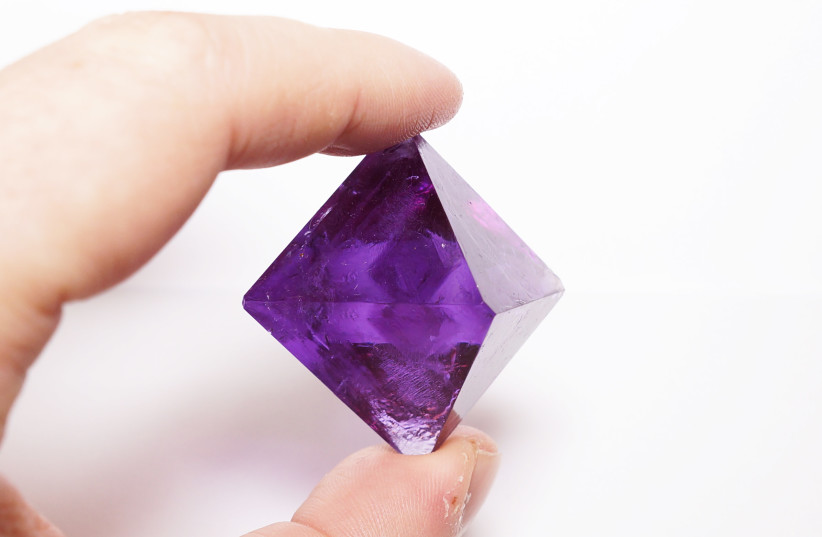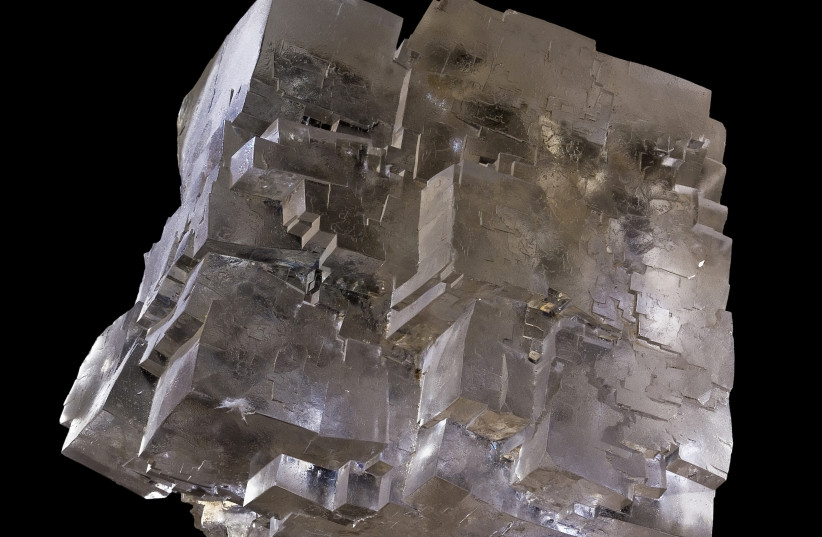Researchers use light to help time crystals survive outside the lab
While scientists have already created time crystals, this is the first case where they remain stable outside of an isolated environment.

Researchers from the University of California, Riverside are using light to allow recently-discovered "time crystals" to survive outside the lab, according to a new study published in Nature Communications.
A time crystal, first proposed by physicist Frank Wilczek in 2012, is a phase of matter which repeats in time, similar to how a regular crystal's structure repeats in space. What that means is that the particles in the crystal perpetually switch between two states without requiring the input of more energy and without losing any energy.
These crystals are the first objects to break what is known as "time-translation symmetry," a rule in physics that states that a stable object will remain unchanged throughout time. Time crystals avoid this rule, being both stable and ever-changing.
So, for example, ice when stable will remain ice and will only change when temperature or another factor makes it unstable. A time crystal would change even when in its ground state, acting differently than all other phases of matter.
Last year, scientists from Stanford and the Max Planck Institute for Physics of Complex Systems, as well as scientists at QuTech, a collaboration between the Delft University of Technology and the Netherlands Organisation for Applied Scientific Research (TNO), figured out for the first time how to create these theoretical crystals.

Halite crystal (credit: DIDIER DESCOUENS/WIKIMEDIA COMMONS)
The problem with these time crystals, though, is that they were fairly unstable and lasted for short amounts of time. Extremely low temperatures or other rigorous conditions are required to minimize external influences.
Scientists at UC Riverside worked to find a system that could create a time crystal without needing to worry as much about external influences, making it more realistic for these structures to exist outside of strict lab conditions.
“When your experimental system has energy exchange with its surroundings, dissipation and noise work hand-in-hand to destroy the temporal order,” said lead author Hossein Taheri, an assistant research professor of electrical and computer engineering in UC Riverside’s Marlan and Rosemary Bourns College of Engineering, to UC Riverside News.
The UC Riverside's time crystals can persist indefinitely at room temperature, despite noise and energy loss.
The team's time crystal is made out of a one-millimeter wide, disk-shaped magnesium fluoride glass resonator. When the disk is bombarded with two laser beams, the researchers observed subharmonic spikes (frequency tones between the two beams) which indicate the breaking of temporal symmetry and the creation of time crystals.
The scientists picked a particular resonator design and precisely controlled the laser beams to make it so that light waves were created with a single crest, instead of like ripples like most forms of light, according to Scientific American. Such waves are called solitons, and scientists were able to create them with a predictable periodicity, on beat, creating a time crystal.
Speaking to Scientific American, Taheri stated that one observing the resonator would see periodic variations in the outgoing light's intensity until, at some point, a light intensity pattern would spontaneously emerge with a very different periodicity set by the solitons. This would show that the system was in a way "setting its own time," thus creating a time crystal.
Andrey Matsko, a physicist at NASA’s Jet Propulsion Laboratory and a co-author of the study, likened the phenomenon to growing salt crystals by suspending a string in salty liquid. While the thread (or laser in the case of the time crystal) helps form the crystals, their periodicity or patterning is entirely their own.
The system created by UC Riverside is unique because its random losses of energy, as well as the encroaching noise (similar to static), actually increased its stability. The system also requires relatively few parts to make.
“This is really a simple [device] architecture,” said Lute Maleki, CEO of the photonic technology company OEwaves and a co-author of the study, to Scientific American. “It should be accessible to a lot of [research] groups.”
THIS PAGE WAS POSTED BY SPUTNIK ONE OF THE SPUTNIKS ORBIT BLOG

No comments:
Post a Comment
Stick to the subject, NO religion, or Party politics